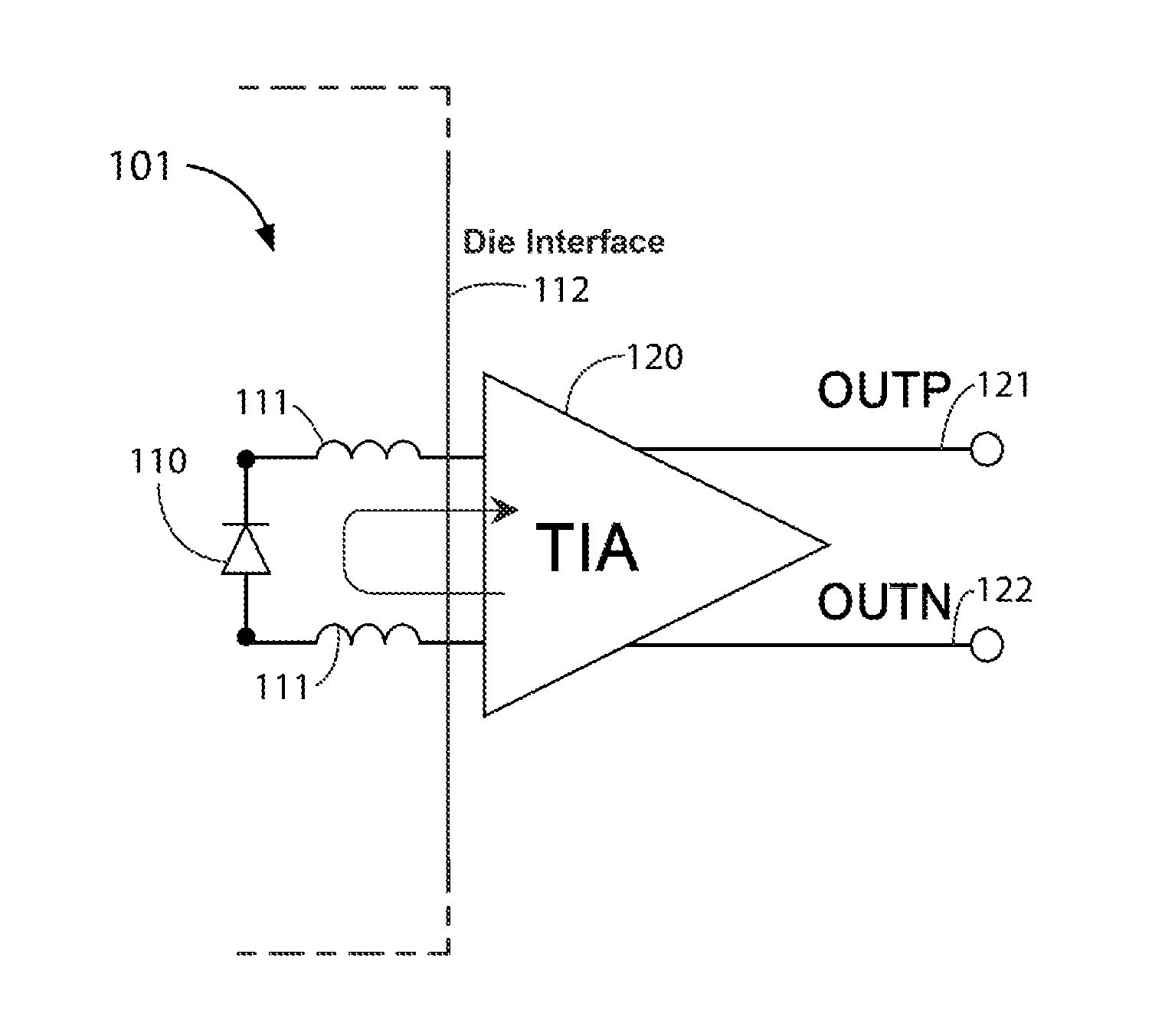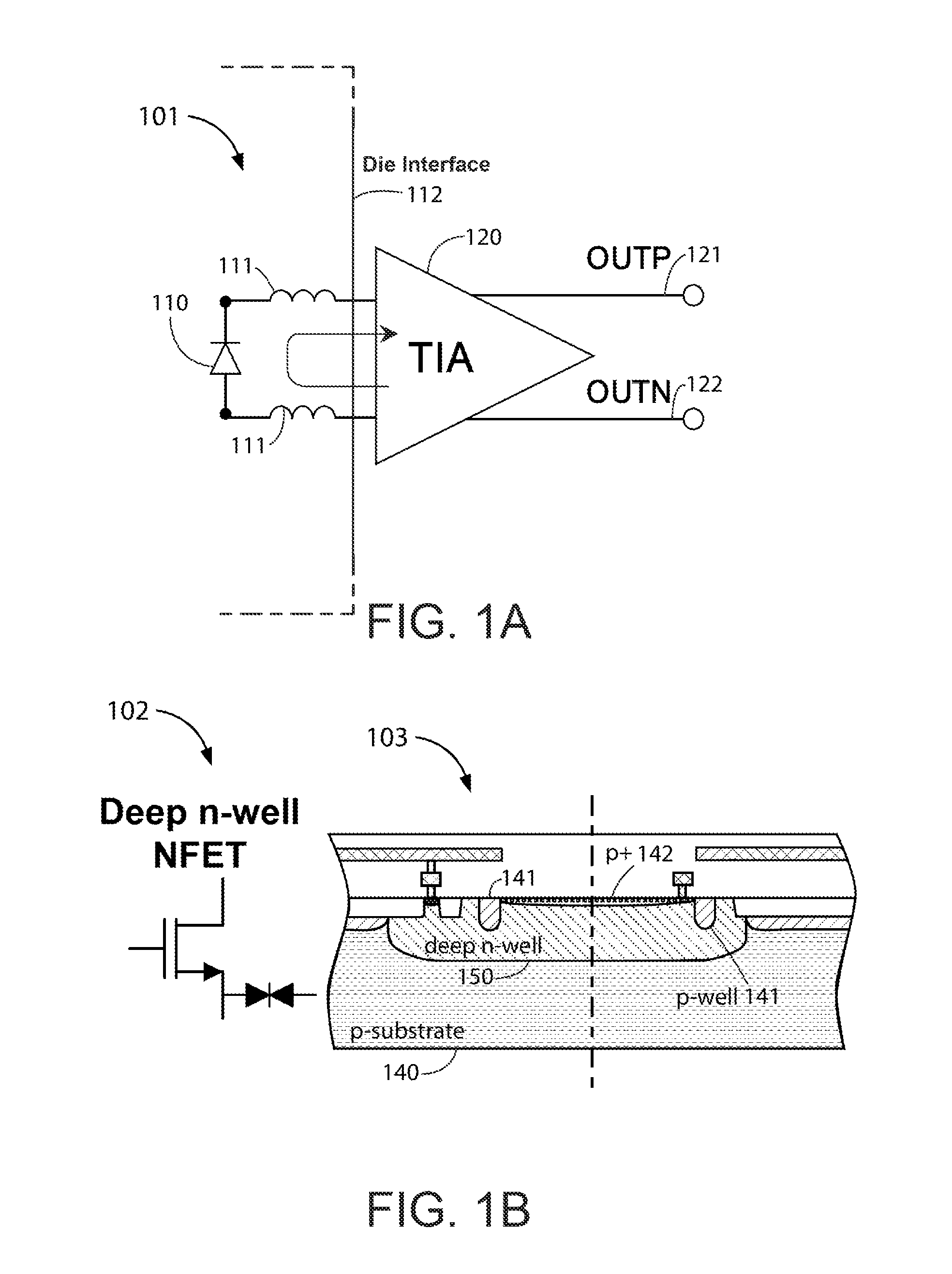Self biased dual mode differential CMOS tia for 400g fiber optic links
a fiber optic link and dual-mode technology, applied in the field of communication systems and integrated circuit devices, can solve the problems of increasing and reducing the sensitivity of systems, so as to reduce the cost of modules, the effect of increasing the complexity of systems
- Summary
- Abstract
- Description
- Claims
- Application Information
AI Technical Summary
Benefits of technology
Problems solved by technology
Method used
Image
Examples
Embodiment Construction
[0027]The present invention is directed to transimpedance amplifier (TIA) devices and systems configured on a single integrated circuit (IC) chip device. More specifically, various embodiments of the present invention provide a self-biased transimpedance amplifier (TIA) device.
[0028]The following description is presented to enable one of ordinary skill in the art to make and use the invention and to incorporate it in the context of particular applications. Various modifications, as well as a variety of uses in different applications will be readily apparent to those skilled in the art, and the general principles defined herein may be applied to a wide range of embodiments. Thus, the present invention is not intended to be limited to the embodiments presented, but is to be accorded the widest scope consistent with the principles and novel features disclosed herein.
[0029]In the following detailed description, numerous specific details are set forth in order to provide a more thorough ...
PUM
 Login to View More
Login to View More Abstract
Description
Claims
Application Information
 Login to View More
Login to View More - R&D
- Intellectual Property
- Life Sciences
- Materials
- Tech Scout
- Unparalleled Data Quality
- Higher Quality Content
- 60% Fewer Hallucinations
Browse by: Latest US Patents, China's latest patents, Technical Efficacy Thesaurus, Application Domain, Technology Topic, Popular Technical Reports.
© 2025 PatSnap. All rights reserved.Legal|Privacy policy|Modern Slavery Act Transparency Statement|Sitemap|About US| Contact US: help@patsnap.com



